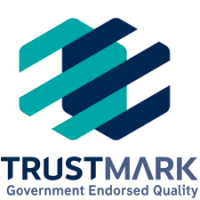Japanese knotweed (Fallopia japonica), originally native to East Asia, presents a formidable challenge as an invasive perennial plant notorious for its rapid growth and potential for extensive damage. Both homeowners and commercial businesses view it as a significant nuisance, but property developers and commercial house builders, in particular, face disruptive consequences. To successfully navigate these challenges, an in-depth understanding of Japanese knotweed is essential. This comprehensive guide delves into the complexities posed by Japanese knotweed and offers strategic insights for property developers to effectively manage this invasive species.
The Challenges Posed by Japanese Knotweed for Property Developers
Identifying and Addressing Knotweed: A Vital Imperative
The ramifications of failing to detect Japanese knotweed in its early stages can be dire. If the plant is not identified prior to the commencement of construction, dormant knotweed rhizomes left on the development site can emerge as thriving plants later on, causing problems for property owners and management after project completion. It’s noteworthy that knotweed rhizomes can lie dormant for up to 20 years before resurfacing.
Project Stoppages: The Financial and Operational Toll
The most significant issue arising from the presence of Japanese knotweed is the potential suspension of a project. If the suspicion and subsequent identification of knotweed arise, the project could be put on hold. This pause doesn’t just entail financial setbacks; it could detrimentally impact various project phases.
Rapid Growth: A Time-Sensitive Menace
The remarkable swiftness of Japanese knotweed’s growth, up to 10 cm per day during summer, is a defining trait. This rapid growth rate poses a significant threat to new construction projects. At any phase, even a small segment of knotweed can escalate into a substantial issue if left undetected. With rhizomes capable of extending up to 3 metres below the surface and spreading 7 metres horizontally, timely action is imperative. Allowing knotweed to proliferate makes its containment and eradication challenging.
Structural Damage and Depreciation
Japanese knotweed’s roots have the ability to exploit cracks in buildings, walls, and pavements, causing extensive structural damage. This damage, in turn, substantially devalues a property and triggers costly repair expenses.
Navigating Development on Land Infested with Japanese Knotweed
Building on Land with Knotweed: Conditions and Considerations
While the presence of Japanese knotweed might initially deter developers, it’s feasible to build on such land under certain conditions:
No Encroachment: If the development’s footprint doesn’t infringe upon the knotweed infestation or a 7-metre perimeter around it, knotweed can be managed according to a Knotweed Management Plan.
Intrusion into Infested Area: If the knotweed’s growth and rhizomes extend into the development’s footprint, comprehensive removal via excavation of all knotweed and contaminated soils becomes necessary.
Legal Implications for Property Developers
Critical Steps for Developers
Property developers should adhere to the following steps to manage legal implications effectively:
Declaration of Knotweed: While developers aren’t legally obligated to disclose knotweed presence, due diligence dictates conducting a survey to identify any knotweed.
Thorough Record-Keeping: If knotweed is identified on a development site, precise records of its locations should be maintained. Enlist a professional survey and Knotweed Report for thorough documentation, including images, to be included in the Operations Manual for future reference.
Implement a Management Plan: A Knotweed Management Plan (KMP) is essential for developers. It demonstrates effective control or complete eradication of knotweed, ensuring no further risk of proliferation.
Detecting Japanese Knotweed: A Developer’s Challenge
Early detection is pivotal, and on-site teams, even if trained, should consider professional surveys. Knotweed’s elusive nature, especially when dormant in winter, requires expert assessment. Recognizing key characteristics like heart or shovel-shaped leaves, zig-zag patterned stems with one leaf per node, pale green stems with red speckles, and white-flower tassels aids identification.
Expert Handling of Japanese Knotweed
The Unsuitability of DIY Approach
Dealing with knotweed typically goes beyond a developer’s capabilities due to regulations. Instead, developers should:
Prioritise Early Detection: Integrating regular ecological surveys during pre-development or pre-purchase stages can save both time and money.
Engage Professional Services: Only certified companies should handle knotweed treatment or removal. They must possess requisite accreditations, licences, and Aqua licences if water bodies are nearby.
Ensure Proper Waste Disposal: Removal requires compliance with waste disposal regulations. Certified waste carriers must transport knotweed and contaminated soil to licensed landfills.
Post-Removal Monitoring: Even after professional removal, monitoring is crucial. A professional survey should oversee post-removal monitoring for several years to prevent potential regrowth.
Eradicating Japanese Knotweed on Development Sites
Effective knotweed management involves implementing a management plan, securing the site, and removing the plant:
Management Plan: Herbicide treatments and monitoring are central to a management plan’s success.
Safe Relocation or Removal: Knotweed can be made safe by relocating it to a controlled area with a root barrier. Alternatively, excavation and off-site disposal are effective removal methods.
Insurance for Knotweed: A Developer’s Safeguard
Considering the plant’s potential for damage and devaluation, developers should contemplate specialised insurance to safeguard their investment. This coverage can include treatment costs, repair expenses, and legal defence.
Final Recommendations
While Japanese knotweed poses substantial challenges, awareness and proactive measures can mitigate risks. Developers are strongly advised not to underestimate the impact of knotweed on-site and to comprehend the consequences of neglecting treatment or eradication. Remember, a developer’s reputation is at stake, as documented legal cases underscore the hefty costs of mishandling this invasive species.
The Postcode Areas We Serve
Gloucester and Swindon
Birmingham and the Midlands
Bristol and the South West
Cardiff and South Wales










